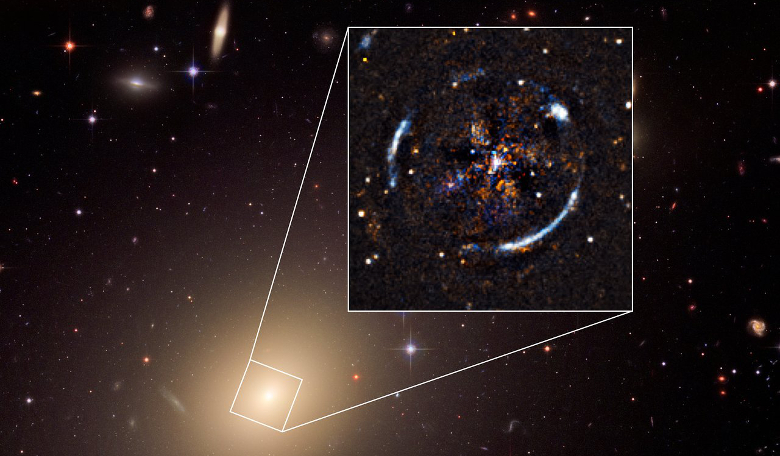By calculating the mass of a nearby galaxy and comparing it with the curvature of space around it, astronomers have made the most precise test yet of Einstein’s general theory of relativity outside the Milky Way to find that when it comes to gravity, the theory still stands the test of time.
Using the Multi Unit Spectroscopic Explorer (MUSE) instrument on ESO’s Very Large Telescope in Chile – a device that looks like a machine straight out of the movie The Matrix – and the NASA/ESA Hubble Space Telescope, a team of astronomers calculated the mass of nearby elliptical galaxy ESO 325-G004, by measuring the movement of stars within it.
“We used data from the Very Large Telescope in Chile to measure how fast the stars were moving in ESO 325-G004 — this allowed us to infer how much mass there must be in the galaxy to hold these stars in orbit,” explained team leader Thomas Collett from the University of Portsmouth, UK.
Fortunately, the huge mass of ESO 325-G004 also has other benefits. The galaxy’s massive bulk acts as a strong gravitational lens, distorting light from a distant galaxy behind it. This light can be bent into a ring – aptly called an Einstein ring – which allows astronomers to measure how light, and therefore spacetime is being distorted by the intervening mass; in this case by ESO 325-G004.
The bending of light by a gravitational body was anticipated by Einstein in 1912, and the degree to which the light is bent is one of the predictions of his theory of general relativity that was published a few years later.
Hundreds of gravitational lenses are currently known and about half a dozen of them are partial Einstein rings, however most are too distant to precisely measure their mass. At just 450 million light-years from Earth though, ESO 325-G004 is one of the closest lenses available for study.
“We know the mass of the foreground galaxy from MUSE and we measured the amount of gravitational lensing we see from Hubble. We then compared these two ways to measure the strength of gravity — and the result was just what general relativity predicts, with an uncertainty of only 9 percent. This is the most precise test of general relativity outside the Milky Way to date. And this using just one galaxy!” continued Collett.
Einstein’s theory is the leading theory to explain how gravity works on a Universal scale and it has withstood vigorous testing from objects within the Solar System. It is being further scrutinised with an ongoing study that is examining the motion of stars around the black hole at the centre of the Milky Way, but as of yet, testing the theory on larger distances has proved difficult due to a lack of suitable sources.
Despite its appeal, Einsteins theory of gravity is not the only one. Other hypotheses, of which there are a few, predict that the effects of gravity on the curvature of spacetime are “scale dependent,” meaning that gravity should behave differently across different astronomical length-scales. The reason these alternative models of gravity have the scale dependancy is to remove the need for dark energy – an unknown form of energy which is hypothesised to permeate all of space, and is causing the expansion of the Universe at an accelerated rate.
However these results from Collett and his team found that this is unlikely to be the case, unless these differences only occur on length scales larger than 6000 light-years.
“The Universe is an amazing place providing such lenses which we can use as our laboratories,” adds team member Bob Nichol, from the University of Portsmouth. “It is so satisfying to use the best telescopes in the world to challenge Einstein, only to find out how right he was.”











